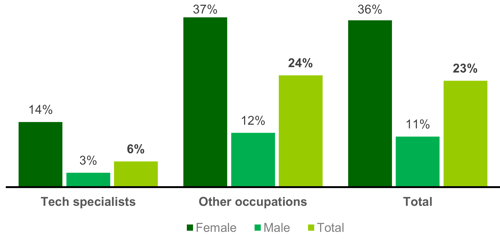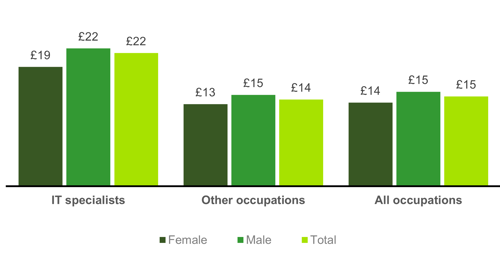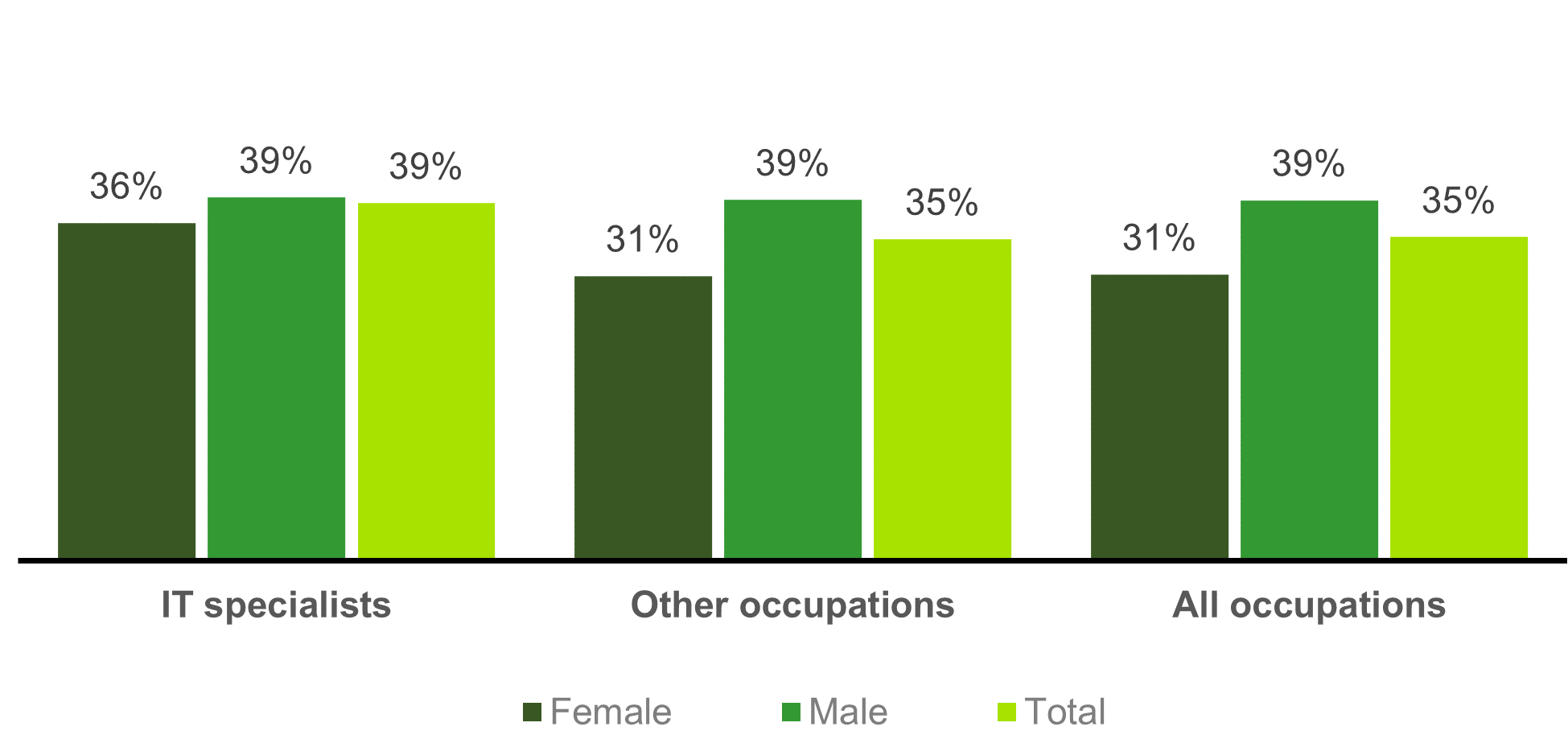Working hours and benefits
Full-time and part-time working
IT specialists in the UK are much less likely to work part-time than other workers, and in 2021, just 6% were working part-time hours compared with 23% of workers as a whole.
Female IT specialists were much more likely to be working part-time than males (14% of women in IT positions compared with just 3% of men), but compared to women in other occupations, part-time working amongst women appears extremely low (i.e. 36% amongst women in occupations other than IT).
As with other IT specialists / workers more generally, when asked why they were working part-time, the vast majority (89%) of women working in IT positions (during the 2017-21 period) stated that they were doing so as they did not want a full-time job (compared with 75% of all women in part-time work).
Incidence of part-time working (2021)

Source: Analysis of ONS Quarterly Labour Force Survey by BCS
Remuneration
The median hourly earnings recorded for female IT specialists working as employees and on a full-time basis in 2021 was £19 per hour – a figure 13% lower than the male equivalent at that time.
Women working in IT positions do however earn substantially more than those employed in other jobs however, and in 2021 the comparison figure for all female employees in full-time work was 30% lower at just £14 per hour.[3]
Median hourly earnings of full-time employees (2021)

Source: Analysis of ONS Quarterly Labour Force Survey by BCS
Responsibility
Using managerial / supervisory status as a proxy for the likelihood that individuals are given responsibility within their work, it appears that during 2021, female IT specialists (that were employees) were less likely than males to be in ‘positions with responsibility’ (comparison figures of 36% and 39% respectively).
By contrast, within the workforce as a whole, the difference was greater, with 31% of women in ‘responsible positions’ compared with 39% of their male counterparts.
Employees in 'responsible positions' (2021)

Source: Analysis of ONS Quarterly Labour Force Survey by BCS
[3]All figures given are for full-time permanent employees.













